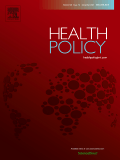
Luk Van Baelen, Els Plettinckx, Jérôme Antoine, Karin De Ridder, Brecht Devleesschauwer & Lies Gremeaux
Archives of Public Health, Volume 79, Article number: 112 (2021)
Abstract
Background
The objective of the study was to describe the frequencies of health-care utilization by people with substance use disorder (SUD), including contacts with general practitioners (GP), psychiatrists, emergency departments (ED) and hospital admissions and to compare this frequency to the general population.
Methods
Data from the national register of people who were in treatment for SUD between 2011 and 2014 was linked to health care data from the Belgian health insurance (N = 30,905). Four comparators were matched on age, sex and place of residence to each subject in treatment for SUD (N = 123,620). Cases were further divided in five mutually exclusive categories based on the main SUD (opiates, crack/cocaine, stimulants, cannabis and alcohol). We calculated the average number of contacts with GP, psychiatrists and ED, and hospital admissions per person over a ten year period (2008–2017), computed descriptive statistics for each of the SUD and used negative binomial regression models to compare cases and comparators.
Results
Over the ten-year period, people in treatment for SUD overall had on average 60 GP contacts, 3.9 psychiatrist contacts, 7.8 visits to the ED, and 16 hospital admissions. Rate ratios, comparing cases and corresponding comparators, showed that people in treatment for SUD had on average 1.9 more contacts with a GP (95 % CI 1.9-2.0), 7.4 more contacts with a psychiatrist (95 % CI 7.0-7.7), 4.2 more ED visits (95 % CI 4.2–4.3), and 6.4 more hospital admissions (95 % CI 6.3–6.5).
Conclusions
The use of health services for people with SUD is between almost two (GP) and seven times (psychiatrist) higher than for comparators. People in treatment for alcohol use disorders use health care services more frequently than people in treatment for other SUD. The use of health services remained stable in the five years before and after the moment people with SUD entered into treatment for SUD. The higher use of primary health care services by people with SUD might indicate that they have higher health care needs than comparators.



